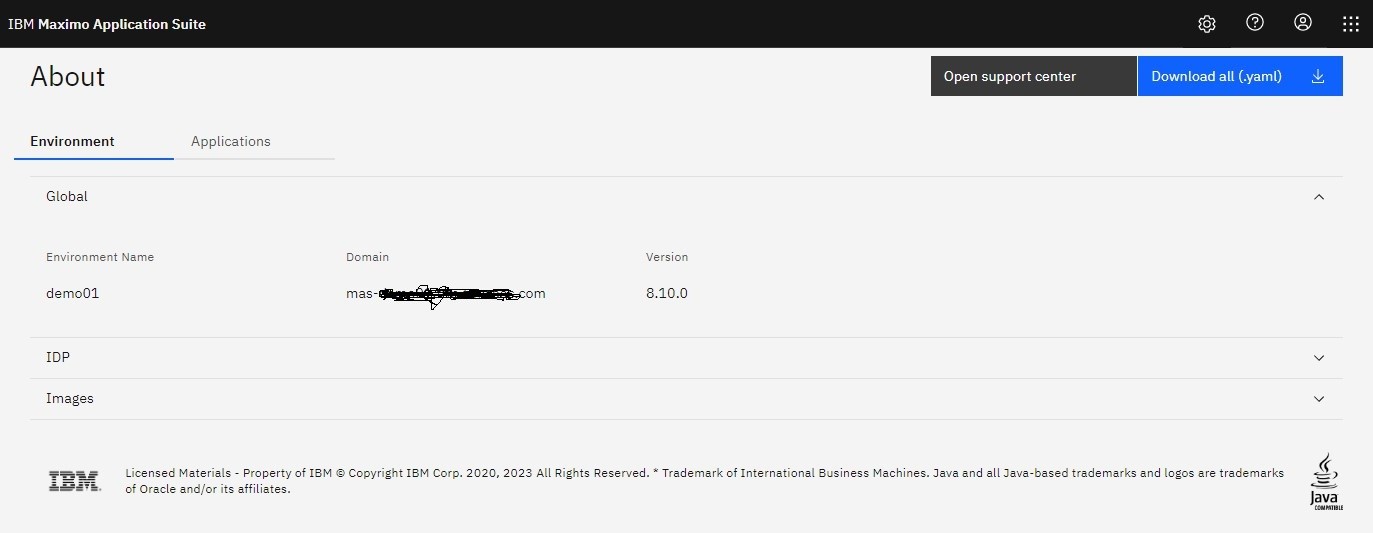
John Q. Todd
Sr. Business Consultant/Product Researcher
Total Resource Management (TRM), Inc.
Now that Maximo Application Suite (MAS) has been out for a few years, IBM is settling into a regular pattern of product updates and releases. Initially there were quite a few releases per year, but now that MAS is maturing, the frequency has changed.
Starting with MAS release 8.7 (currently as of March 2023 the most recent release of MAS is 8.10), IBM has adopted an official Software Support Lifecycle Policy that is worth understanding.
Of course, each of the MAS components, Manage, Monitor, Health, etc. have their own release numbers, but they too are following the numbering scheme. As you talk amongst yourselves, be sure to make clear whether you are speaking about a MAS release number or an underlying MAS component release number. They will be different. For example, MAS release 8.10 comes with Manage version 8.6.
The versioning scheme
The scheme used by IBM is based upon a specification released by semver.org. Semantic versioning makes distinctions between Major, Minor, and Patch versions of software. The numbering for MAS versions then looks like: Major.Minor.Patch

Patches are for bug fixes that are compatible with a previous release.
Minor releases have new functionality that is compatible with a previous release.
Major releases have changes/new features that are not compatible with earlier releases.
What is a Continuous Delivery Stream?
Let’s use the most current release of MAS as an example. MAS 8.10 was released on 3/28/2023. The release of MAS 8.10 also started its continuous delivery stream in that regular updates to the stream will appear as Minor versions.
Minor versions then receive product defect fixes and security updates via Patches.
It is anticipated that these streams are available for at least 2 years from when they are released.
However, IBM has stated that for some releases IBM will designate them as a “Long Term Support (LTS),” release. These releases will receive defect fixes and security updates for a minimum of 3 years from their release date. MAS 8.10 has been designated as an LTS release.
At what frequency?
At the moment, IBM is not committing to any specific release schedule for MAS. However, they are aiming for up to 3 Minor releases per year, and a Major LTS release every 12-18 months.
Of course, any end of service notifications are expected to be published 6 months prior to it becoming effective.
What about RHOS?
As Red Hat OpenShift is bundled with MAS, IBM will field issues and provide product updates and fixes as they arise. This link addresses how that element of MAS support works.
Wrap up
While MAS/RHOS may be new to you, the process of staying current and patching an enterprise suite of applications has not changed much. Care should be taken to stay current and not allow your MAS instance(s) to lapse into being unsupported. Not to say you have to be on the absolute most current Major.Minor.Patch, but an N-1 approach is reasonable.
Here is a valuable link from IBM that explains in more detail about the Continuous Delivery approach.
TRM has been working with MAS since the moment it landed in the market. By assisting clients who are implementing MAS whether on-prem or in the cloud, we have gained valuable experience with all the releases of MAS. Contact us to see how we might be able to help you.

Great information. Will applications like Manage be versioned up at the same rate as MAS?
That will be up to IBM, but we should expect when a new release of MAS comes out, so too will a release of the underlying components.
But, the underlying components can/do have their own mid-release numbers like Manage 8.6.3, 8.6.4… all occurring under MAS 8.10.